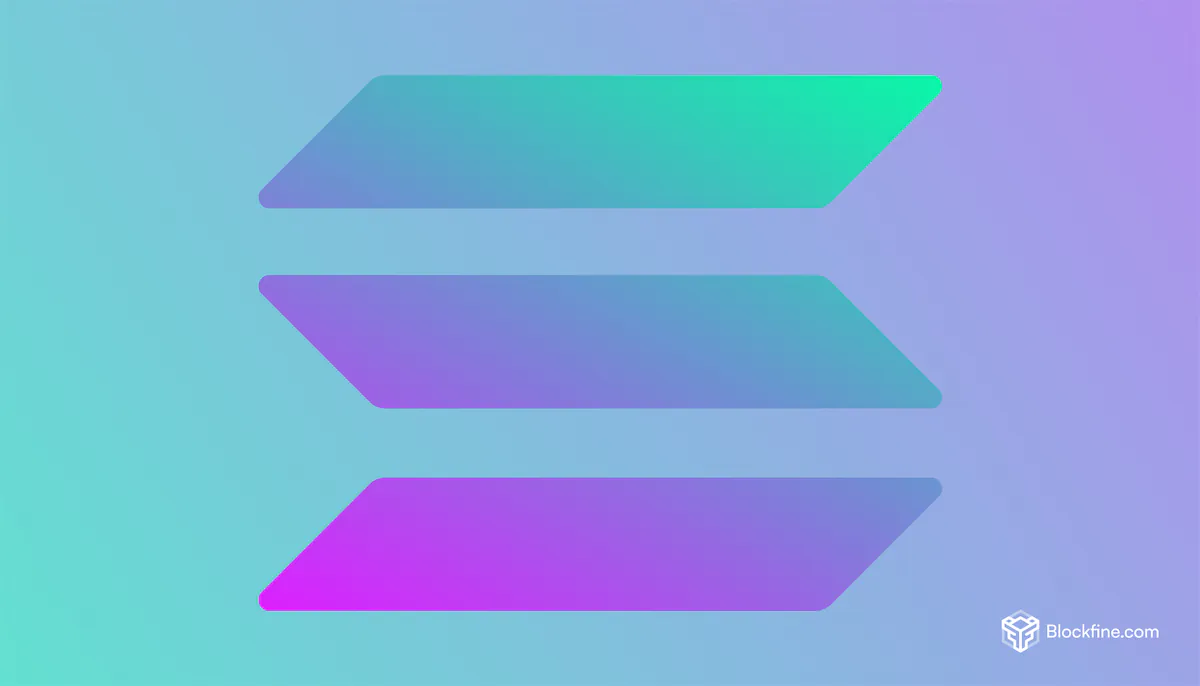Solana (SOL) is a high-performance blockchain platform designed to facilitate decentralized applications (dApps) and provide a scalable solution for the cryptocurrency ecosystem. Launched in 2020, Solana has quickly risen to prominence, thanks to its unique architecture, which offers high transaction throughput, low fees, and robust security. This article provides an in-depth overview of Solana, covering its origins, key features, technological innovations, and future prospects.
What is Solana (SOL)?
Solana is a blockchain platform known for its ability to process thousands of transactions per second, making it one of the fastest blockchain networks available. The platform was created to solve the scalability issues faced by earlier blockchains like Bitcoin and Ethereum, which struggle to handle a large volume of transactions efficiently. Solana’s native cryptocurrency, SOL, is used to pay transaction fees, participate in governance, and facilitate various other functions within the network.
The Solana blockchain was developed by Solana Labs, a company founded in 2017 by Anatoly Yakovenko, a former Qualcomm engineer. Yakovenko’s vision was to create a blockchain capable of handling high throughput while maintaining low transaction costs and fast processing times. This vision led to the development of the Proof of History (PoH) consensus algorithm, a key innovation that sets Solana apart from other blockchains.
Key Features of Solana
Proof of History (PoH)
One of Solana’s most significant innovations is its Proof of History (PoH) consensus mechanism. PoH works by creating a historical record that proves that an event has occurred at a specific moment in time. This allows the network to order transactions efficiently without needing to rely on slower consensus methods like Proof of Work (PoW) or even traditional Proof of Stake (PoS). By timestamping transactions, PoH enables Solana to achieve extremely high speeds and scalability.
High Transaction Throughput
Solana is capable of processing up to 65,000 transactions per second (TPS) under optimal conditions, with a theoretical limit much higher. This is a significant improvement over other blockchains like Ethereum, which can handle only about 15 TPS. The high throughput is made possible by Solana’s innovative architecture, which includes PoH and other optimizations that reduce the computational load on the network.
Low Transaction Fees
Transaction fees on the Solana network are extremely low, often costing less than a fraction of a cent. This makes Solana an attractive platform for developers and users, particularly in areas like decentralized finance (DeFi) and non-fungible tokens (NFTs), where transaction costs can be a significant barrier.
Scalability and Efficiency
Solana’s architecture is designed for scalability, enabling the network to grow without sacrificing performance. The combination of PoH with Tower BFT (a version of Byzantine Fault Tolerance) ensures that the network remains secure while processing a high volume of transactions. Additionally, Solana’s energy-efficient design minimizes its environmental impact, addressing one of the major criticisms of earlier blockchains like Bitcoin.
Development Team and History
Solana was founded by Anatoly Yakovenko, who brought together a team of experts in distributed systems and blockchain technology. Key members of the team include Greg Fitzgerald, who played a crucial role in prototyping the initial design, and Raj Gokal, who helped scale the project from its inception. The Solana Foundation, based in Switzerland, oversees the development and adoption of the Solana network, working alongside Solana Labs.
The Solana project began in 2017, with its first public testnet launched in 2018. The mainnet beta was released in March 2020, marking the official start of the Solana blockchain as a live network. Since then, Solana has experienced rapid growth, attracting numerous projects in DeFi, NFTs, and more.
Tokenomics of Solana (SOL)
The SOL token is the native cryptocurrency of the Solana network. It is used for paying transaction fees, staking, and participating in governance decisions. SOL has a capped supply, initially set at approximately 489 million tokens. The network also implements a deflationary mechanism by burning a portion of the transaction fees, which reduces the overall supply over time and could potentially increase the value of the remaining tokens.
SOL was first distributed through a series of private and public sales, with the initial coin offering (ICO) held in March 2020. Since its launch, SOL has become one of the top cryptocurrencies by market capitalization, reflecting the growing adoption and success of the Solana platform.
The Future of Solana
Solana’s future looks promising, with ongoing developments aimed at enhancing its scalability, security, and usability. The network continues to attract a diverse range of applications, from DeFi platforms like Serum and Raydium to NFT marketplaces and gaming projects. Additionally, Solana’s partnerships with major companies like Visa underscore its potential to become a key player in the global financial system.
However, Solana is not without challenges. The network has faced outages and criticisms regarding its centralization, and it competes with other blockchains like Ethereum, which is also evolving to address scalability issues. Despite these challenges, Solana’s innovative technology and strong community support position it well for continued growth and relevance in the rapidly evolving cryptocurrency landscape.
Conclusion
Solana (SOL) is a groundbreaking blockchain platform that offers high transaction speeds, low fees, and robust scalability, making it a strong contender in the cryptocurrency space. With its unique Proof of History consensus mechanism and a rapidly growing ecosystem, Solana is well-positioned to play a significant role in the future of decentralized applications and digital finance. Whether you’re a developer, investor, or blockchain enthusiast, understanding Solana is essential to navigating the next generation of blockchain technology.
